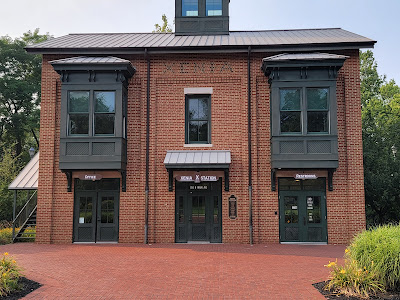I see a lot of posts on social media about
measuring distance traveled on a bike or occasional posts about average speed.
Many times it is a debate over the merits of a dedicated cycling device vs a
smartphone app. As an experienced cyclist trained in electronic engineering
here are some of my thoughts.
Distance is generally measured one of
two ways. The device may count revolutions of your wheel, or it may use GPS.
Both methods will result in some amount of error. If you assume there is no
slippage between your wheel and the riding surface then the first method seems
like it should be more accurate. This depends on the system accurately knowing
the circumference of the wheel being measured. Usually this is done by entering
the wheel or tire size into the system. Assuming you calibrate the system in
this way you should get a reasonable accurate distance measurement. There will
still be error due to differing tread patterns on the tire resulting in a
slightly different circumference. These slight differences add up with each
revolution of the wheel. This results in what is know as systematic error. The
error is the same all the time since the difference between assumed
circumference and actual circumference is constant. Of course tire wear will
also introduce some error but you get the idea.
What about GPS? GPS measures the
distance from the GPS unit to a satellite orbiting overhead. If you know the
location of the satellite, then you know you are somewhere along a sphere with
a radius equal to that distance. Do the same with another satellite and you now
know you are somewhere along the intersection of the two spheres. A third
satellite narrows you location to a single point.
There are a lot of different sources of
error with GPS. The distance is determined by the time it takes the signal to
travel from the satellite to your location. The signal travels at the speed of
light so the times are short. This means time measurements need to be very
accurate. Atomic clocks on the satellites assure accuracy. In order to stay in
orbit the satellites must orbit a high velocity. Velocities are fast enough to
require a correction due to Einstein’s theory of relativity! This is done
inside the GPS unit without the user even being aware. So where does the error
come from?
The GPS satellite signals can locate
you to within a few feet. Software uses additional tricks to increase accuracy.
For example, it may use known locations of Wi-Fi hotspots or cell towers to
fine tune location. These types of corrections vary with specific devices and
manufactures. This leads to slight differences in results.
Another difference is sampling rate.
Consider traveling along a curve. If your GPS samples often then your route
approximates the curve. If the unit samples less frequently your route will
look like a series of straight lines (chords). The straight lines will add to a
shorter distance than the circle. There are many other small errors that vary
depending on the software/hardware used. These errors are known as random
errors.
Speed is easy once distance is
determined. Time measurements are very accurate so speed accuracy depends on accuracy
of distance. Reporting speed is another
issue. Do you report the speed you see while cruising on a straight away or the
average indicated on your device. Road crossings result in a slower average
even with auto pause functionality. Rail-trail surfaces typically result in a
slower speed than roads. Hybrid and mountain bikes are slower than road bikes.
Knobby tires are slower than slick tires.
I have used several software apps and
dedicated devices. There is generally some difference in the results. I have
also compared results with mile markers along various trails. I have found the
differences to be slight, less than 1%. Many cyclists seem to concerned about
these errors but unless you are a very elite cyclist doing serious training, I
don’t see anything to worry about.
I always carry my phone and don’t see a
need for an additional device. There are several apps available for free. Many
others prefer a dedicated device. Let’s consider some pros and cons. The
dedicated units are much smaller and lighter than a phone. I however prefer the
piece of mind of having a phone for medical, mechanical or other emergencies. A
respite from phone calls can easily be achieved with the phone power switch,
airplane mode or ringer shut off.
One frequently cited difference is
battery life. There is no question that a dedicated device has a much longer
battery life than a smartphone. That being said, I don’t have any problems
using my phone even for rides extending 8 or more hours. Some suggestions for
prolonging phone battery life include closing any apps not being used. Keep your screen shut off unless you are
actually using the phone. Since I ride rails-trails navigation is not an issue.
Just having the screen on uses a lot of power. Use airplane mode unless you are
actually making a call. GPS will continue to work in airplane mode. This is
especially important in poor or no coverage areas. Your phone increases power
usage to try to maintain contact with cell towers in poor coverage areas.
Shut off Wi-Fi and Bluetooth unless you
use Bluetooth sensors for speed and/or cadence. Keep your phone warm. Cold
batteries don’t perform well. In cold temps keep your phone inside your jacket.
You can also carry a portable charger, a small auxiliary battery that plugs
into the charging port. Most are the size of a cigarette lighter.

